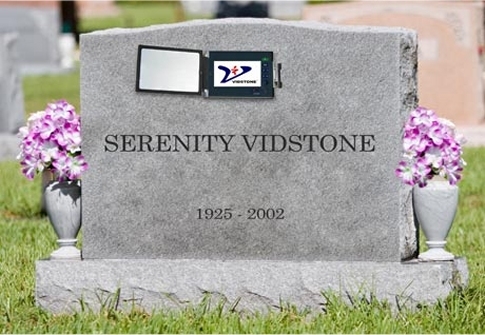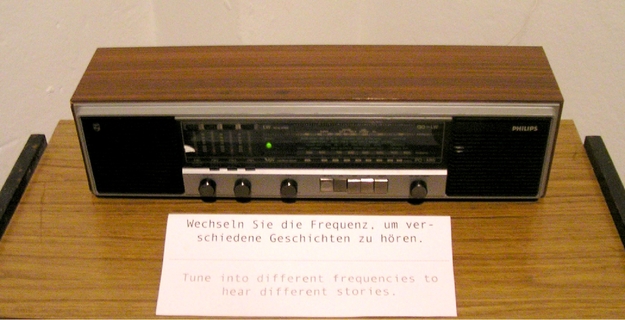I pose their concepts in relation to the history of our perception of death described by Philippe Ariès in 'Essais sur l'histoire de la mort en Occident', and the relation of subjectivity/individualism and death described in Jacques Derrida's essay, 'Donner la Mort'. I look at these histories and conceptualizations of media as a way to assess whether contemporary mourning rituals begin to define a new tradition of mourning, and as a means to question how these rituals enhance/flatten/affect our perception of death. Finally I present spectres?, a work I conceptualized in the context of this research that deals with consciousness of death in public space.
*If you're a loved one, or a relative, press 1
*If you didn't like me, press 2
*If I didn't like you, press 2
*If I wanted to love you, press 3
*If you wanted to love me, press 3
If you don't fit any of the categories above, MOVE OVER...YOU'RE STANDING ON ME!
Dave, OKC, OK*
*One of the responses made to an online BBC article about multimedia tombstones.
“La mesure de la mesure nous manque”
(We lack the measurement of 'measure')
-Derrida in Spectres de Marx (p.129)
How is our mourning experience influenced by the alteration of human temporal experience by machinic processes? How do contemporary mourning rituals and media such as multimedia tombstones or online memorials reflect the disjunction between computational and lived time? Moreover, do they serve to enhance our understanding of these time rifts?
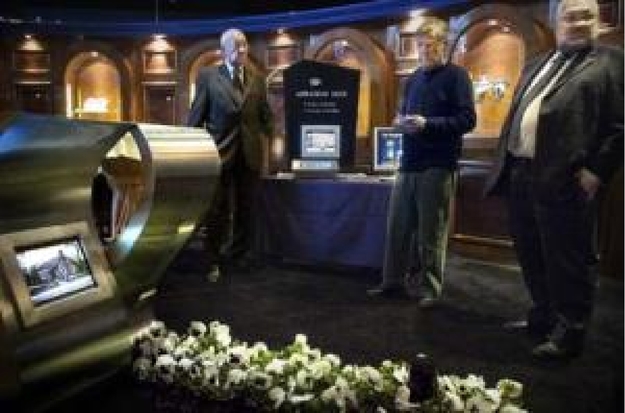
Figure 2: LCD integrated tombstone activated by infrared sensor by Henk Rozema
As cemeteries moved from city centers to suburbs, burials to crematoriums, gravestones to anonymous forest and sea ash dispersing ceremonies, and halls of memory from monuments to websites, memory itself migrated. Sándor Márai states in Tagebücher 1984-1989 that there is no particular moment at which a person dies, rather it happens in stages (quoted in Kunstmuseum Bern, 2006, p. 41). We cannot still affirm that memory or even death is tied to a 'place', or a 'time'. Our movements, changing lifestyles and the speed of machinic processes affect the way in which we 'remember', mourn, perceive and represent the dead. We are consequently developing a new system of symbols/rituals which reflect the changes in our perception and experience of death. How are these symbols and rituals represented in contemporary Western mourning culture and how do they fit into the tradition of mourning?
"Dans la vie de tous les jours, la mort, jadis si bavarde, si souvent représentée, a perdu toute positivité, elle n'est que le contraire ou l'envers de ce qui est réellement vu, connu, parlé."
(In everyday life, death, in the past so talkative, so often represented, has lost all positivity, it is but the contrary or the inverse of what is really seen, known, spoken off.)
-Philippe Ariès in Essais sur l'histoire de la mort en Occident (p.196).
Ariès in Essais sur l'histoire de la mort en Occident, states that death has become taboo in contemporary Western society. He explains that the dramatic nature of death is in itself a modern concept linked to the individualization of the Last Judgment (which in turn led to the individualization of burials/tombstones). Interestingly, both Roland Barthes (1980) and Ariès (1975) refer to la crise de la mort (the crisis of death) when referring to the contemporary situation regarding society's perception of death, thus drawing an anthropological link between Death and the 'new image'. Roland Barthes poignantly cites mortification as being a main point of differentiation between video and photography. This correlation between death and representation demands the analysis of how technology and 'new media' affect our mourning experience, to further understand our contemporary perception of death and its taboo.
"La mort est peut-être dans cette image qui produit la Mort en voulant conserver la vie."
(Death is perhaps in this image that produces Death while wanting to preserve life).
-Barthes in La Chambre Claire.
Figure 3: MySpace profile created in memoriam of KrunkKindle's - Remember KrunkKindle on MySpace Figure 4: MySpace profile created in memoriam of Garret Jay - Garret! “R.I.P BRO” on MySpace .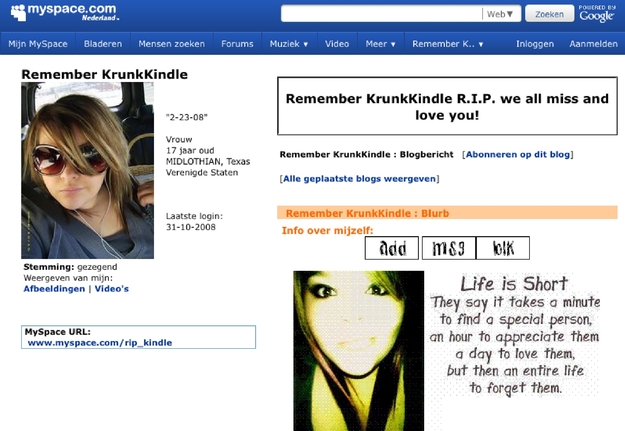
Figure 3: MySpace profile created in memoriam of KrunkKindle's
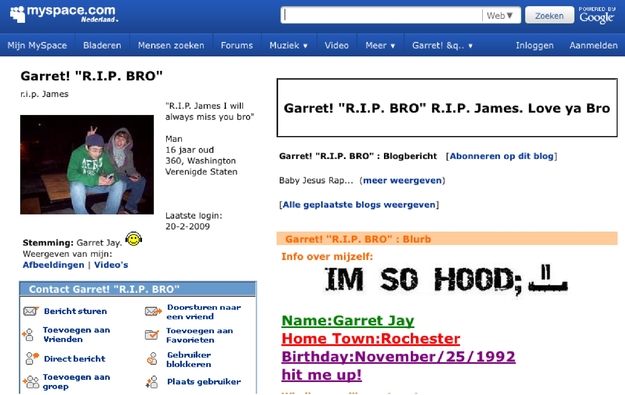
Figure 4: MySpace profile created in memoriam of Garret Jay
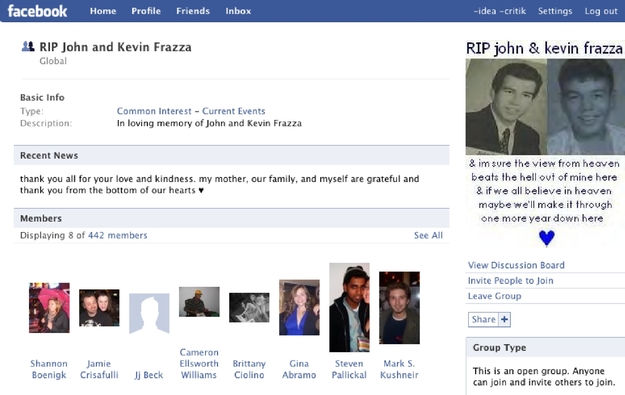
Figure 5: Facebook group created in memoriam of John and Kevin Frazza
Media as such is a sort of displaced interpretation of an event, emotion or even person that has occurred in the past, which many theorists have associated to the establishment of a desire to unravel 'the essence'. Death is an experience outside of the 'living' and as such outside of our realm of understanding. Media presents itself as a similar concept as its essence cannot be discovered; it has no essence, but creates within us an insatiable desire to uncover it. As such, mediated mourning rituals become an important place to begin questioning how our society perceives and deals with death. Indeed, if we tend towards these forms of mediated mourning, what does that say about our cultural acceptance of death? Robert Harrison (2003) believes it is art's role to propagate and maintain consciousness of death, as it is the basis of all culture.
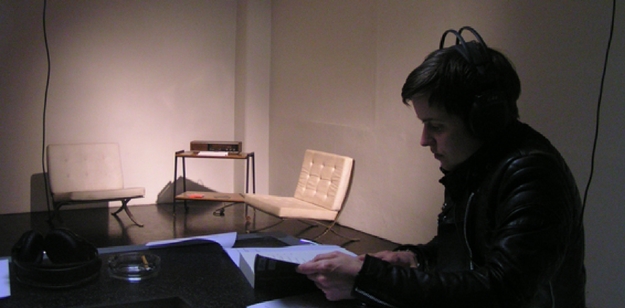
Figure 6: spectres? exhibition at ESC im labor (Graz, A)
Spectres? is an exploration into how this consciousness might be elucidated. It is an installation designed to plunge the visitor into a parallel auditory mourning space. Interviews that were conducted with individuals on the subject of their mourning are transmitted via FM radio frequencies into the space. The accounts can be tuned into over several frequencies of an old radio. Elsewhere in the space, a set of headphones is placed through which similar interviews can be heard. Simultaneously, conversations and noise from within the space itself are periodically fed into the recordings heard through the headphones at varying degrees of speed, creating a distorted personal experience within this public environment. These seemingly unobtrusive objects are placed in a sitting area where people usually cluster to chat or order a drink, thereby placing the listener in a very public position while hearing accounts of various mourning experiences. The installation uses the ESC gallery space to incite reflection upon the taboo of death/mourning and the fear of nurturing a consciousness of death in the public sphere.
eternal.name
spectre@eternal.name
------
Cited:
- Ariès, P. (1975) Essais sur l’histoire de la mort en Occident du Moyen Age à nos jours, Paris: Éditions du Seuil.
- Barthes, R. (1980) La chambre claire, Paris: Éditions Seuil/Gallimard.
- Derrida, J. (1993) Spectres de Marx, Paris: Galilée.
- Kunstmuseum Bern (ed.) (2006). Six Feet Under; Autopsy of Our Relation to the Dead. Leipzig: Kerber Verlag.
- Harrison, R. (2003) Dominion of the Dead, University of Chigago Press.
- BBC News (8 July 2004): Would you leave a video message? last accessed 24.05.2007.
Images:
- Figure 1: The Serenity Screen. Developed by Vidstone
- Figure 2: Digital Tombstone
- Figure 3: Remember KrunkKindle
- Figure 4: Garret! “R.I.P BRO”
- Figure 5: RIP John & Kevin Frazza
- Figure 6: spectres? exhibited at ESC im labor (Graz, A)
- Figure 7: (ibid)
